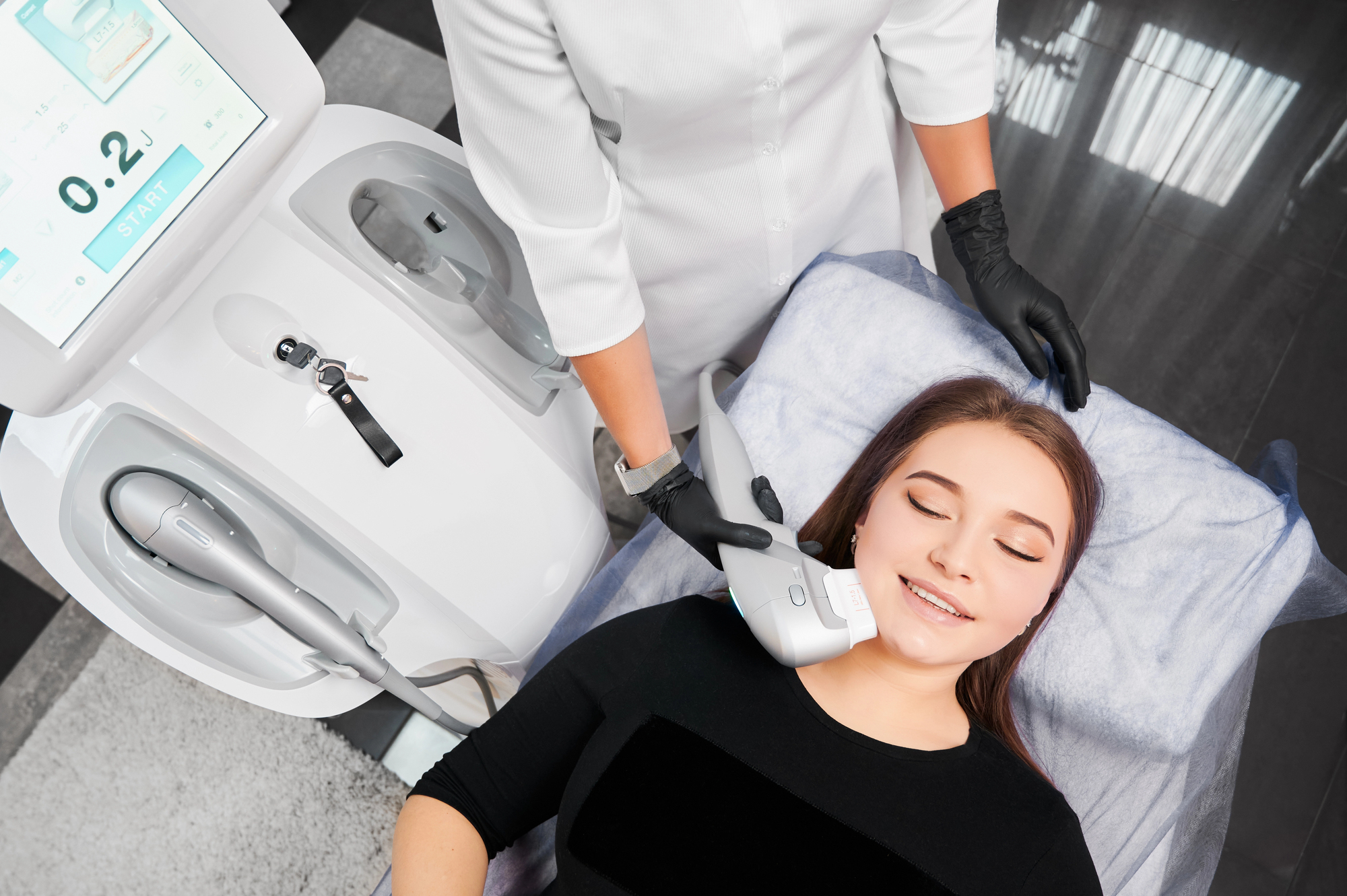Pigmentation and melasma
Many women and some men experience Melaasma, a pigmentation on the face that can often be a result of hormonal changes.


What is pigmentation?
Black, brown and blue pigmentation of the skin is a common occurrence and can represent a variety of conditions. Freckles, birthmarks, sun damage, age spots, lentigines and melasma are just a few reasons for pigmentation.
Most brown marks on the skin will not be medically serious,but because some cancers can also present as pigmented spots, it is important to have your skin checked by a dermatologist before proceeding with treatment.
Melasma is a condition, more common in females, wherepatches of brown appear on the face, typically the forehead, cheeks and upper lip. It can be associated with hormonal changes in pregnancy or taking the oralcontraceptive pill. However, for some patients, it can be troubling cosmetically and treatment is desired.
Can melasma be successfully treated?
Melasma can be difficult to treat, so our goal is often improvementover complete cure. We can use a range of laser and light based therapies, aswell as topical creams, to treat melasma, including the Nd:YAG pigment, FraxelDual and Picosure lasers, as well as IPL.
What causes melasma and other dark pigmentation?
One of the primary factors in the development of melasma isexposure to sunlight. Strict sun protection, through the use of SPF50 and otherprotection measures, is essential.
Brown pigmentation represents an increase in the melanin ofthe skin in that spot or area. We all have some melanin in our skin, withdarker skin tones having more. The reason why an increase in melanin in alocalised area occurs depends on the condition – birthmarks are random patchesof darker skin; scarring or inflammatory conditions may causes darker patches;sun exposure can cause a range of brown pigmentation conditions, developing upto 20 years after the sun exposure, explaining why sun spots and sun damageoccur more in middle aged and older skin.
How do you treat other brown pigmentation?
Many conditions causing dark pigmentation can be treated,but the choice of treatment depends on the cause of the pigmentation andunderlying skin type, as well as whether there are any underlying skinconditions. Treatment options can include bleaching creams, skin peels, IPL,pigment lasers, ablative laser and Fraxel lasers.
In the rare case of pigmentation being diagnosed as cancer,treatment options are different.
Pigmentation is easier to treat in lighter skin tones, asdarker skin have a greater risk of burning, darkening or hypopigmentation(lightening of the skin) from light-based treatments. Asian skin inparticularly tricky, even when pale, as the underlying skin pigmentation candiscolour. For this reason, we recommend only seeking laser treatment at amedical clinic with a wide range of lasers available, like NBLDC, so treatmentcan be tailored to your skin type.
How do I know if my dark pigmented spot is cancer?
Most pigmentation is not cancer. However, if a pigmentedspot changes shape or colour, starts bleeding, or is persistently itchy, westrongly suggest you have it reviewed by a dermatologist.
It is also recommended that people with lighter skin toneshave regular skin checks with a dermatologist.
How much does pigment laser treatment cost?
Your initial consult with our dermatologist will cost $365, with a medicare rebate of $86 if you have a referral from your GP.
Treatment cost depends on the area being treated, but typically starts from $500.
Corrective Treatments
Lorem ipsum dolor sit amet consectetur. Aliquam aliquet ultricies erat diam ut lorem nunc mauris vestibulum.
Our Practitioners
The doctors at Neutral Bay Laser & Dermatology Clinic are highly trained medical professionals, with a caring and compassionate outlook, and a commitment to delivering exceptional results for our patients.

Dr. Terence Poon is the medical director of Neutral Bay Laser & Dermatology Clinic. He is a dermatologist and laser specialist. He has trained extensively in Australia and internationally, in the laser-responsive cosmetic aspects of dermatology.
He undertook a fellowship with Dr Jim Walter, who pioneered the use of lasers in dermatology in Australia and who founded our clinic, which was the first full time laser dermatology clinic in Sydney.

Dr Marianne Nolan has been with the clinic for over two decades and is very experienced in all aspects of laser treatments and related cosmetic procedures. Her meticulous record of safety and competence has earned her a huge following of dedicated cosmetic skin care patients, who also enjoy warm, caring manner. She trained extensively with our founder, Dr James Walter, and has attended regular training programmes and conferences in Australia, Europe and the USA. Together with Dr Walter, she is co-developer of our bespoke rejuvenation treatments, the Walter Nolan Multi-Laser Procedures.

Dr Helena Torpinski has been with our clinic for nearly two decades. Her bright and lively manner continues to ensure she is popular with our patients. Helena works as a GP in Newtown when she is not at our clinic and this adds a great breadth of knowledge and understanding to her engagement with patients. She has expertise in all forms of laser and light-based treatments and has a commitment to ongoing education, training and regular conference attendance.














































